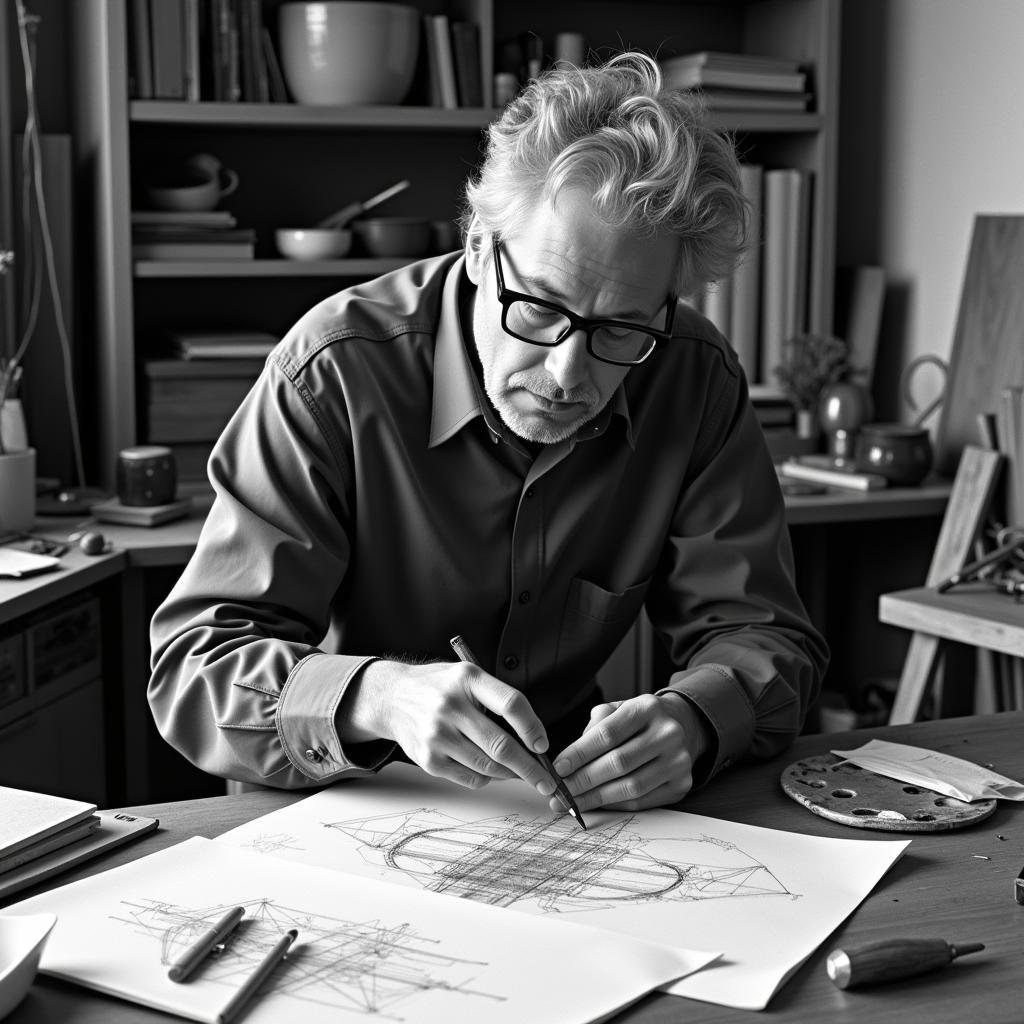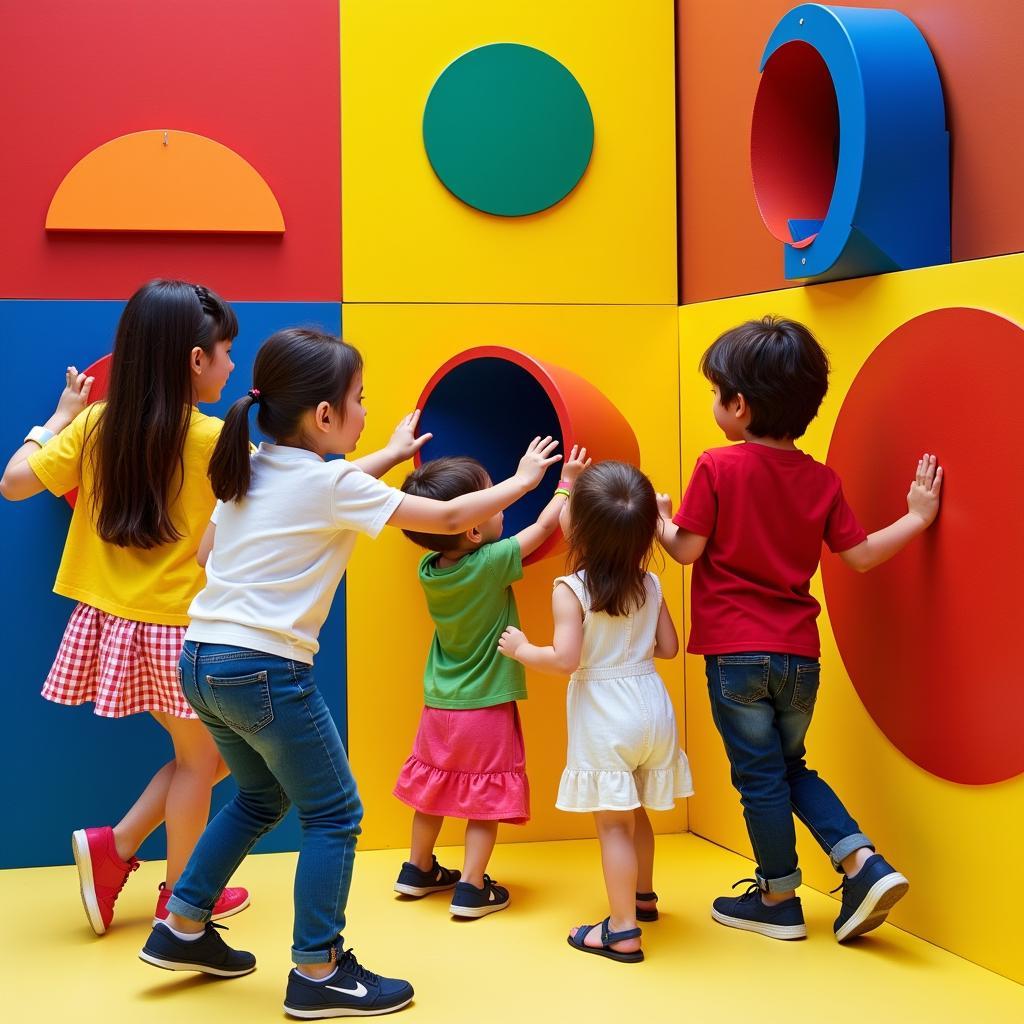Design as Art: Exploring the Legacy of Bruno Munari
Bruno Munari, the celebrated Italian artist and designer, believed that design transcended mere functionality to encompass the realm of art. He saw “design as art,” a philosophy that permeated his prolific career, spanning over six decades and encompassing painting, sculpture, graphic design, and product design. This article delves into Munari’s fascinating approach to design, examining its core principles and enduring influence on contemporary design thinking.
 Bruno Munari working on a design project
Bruno Munari working on a design project
Functionality Rooted in Playfulness
Munari strongly advocated for a design process infused with playfulness and experimentation. He believed that by approaching design with a childlike curiosity, one could unlock innovative solutions and challenge conventional thinking. His iconic children’s books, such as “The Yellow Triangle” and “Bruno Munari’s Zoo,” exemplify this philosophy, transforming simple geometric shapes and vibrant colors into engaging tools for learning and exploration.
 Children interacting with a colorful, interactive installation designed by Bruno Munari
Children interacting with a colorful, interactive installation designed by Bruno Munari
The Power of Simplicity and Clarity
“Complicating is easy, simplifying is difficult,” Munari famously stated. He championed the elegance of simplicity, believing that effective design should communicate its purpose clearly and intuitively. His work, from his sleek, minimalist furniture designs to his visually striking posters, reflects this principle, stripping away unnecessary elements to achieve maximum impact. Munari’s focus on clarity and functionality continues to resonate with designers today, particularly in our increasingly complex and information-saturated world.
Materials as a Source of Inspiration
Munari possessed a deep fascination with materials and their inherent properties. He believed that understanding the unique characteristics of each material was crucial in shaping the design process. This led him to experiment extensively with unconventional materials, creating innovative works like his “Useless Objects” series, where he transformed discarded materials into whimsical sculptures. Munari’s emphasis on material exploration encourages designers to think beyond traditional boundaries and embrace the unexpected.
 Close-up of a Bruno Munari sculpture made from found objects and industrial materials
Close-up of a Bruno Munari sculpture made from found objects and industrial materials
The Enduring Influence of Bruno Munari
Bruno Munari’s legacy extends far beyond his individual creations. His philosophy of “design as art,” grounded in playfulness, simplicity, and a deep respect for materials, continues to inspire and challenge designers across disciplines. His work serves as a testament to the power of design to enhance our lives, spark our imaginations, and shape a more beautiful and functional world.
FAQs
1. How did Bruno Munari define “design as art”?
Munari believed that design went beyond mere functionality to encompass aesthetic and emotional qualities, making it a form of art in its own right.
2. What are some key characteristics of Bruno Munari’s design philosophy?
Munari’s design approach emphasized playfulness, simplicity, clarity, and a deep respect for materials.
3. How did Bruno Munari’s work influence children’s design?
Munari’s children’s books and toys were groundbreaking in their use of simple shapes, vibrant colors, and interactive elements, encouraging learning through play.
4. Where can I learn more about Bruno Munari’s work and legacy?
You can explore more about Bruno Munari’s work and ideas by visiting the design art bruno munari website.
5. How is Bruno Munari’s design philosophy relevant today?
In an era of increasing complexity, Munari’s focus on simplicity, clarity, and human-centered design remains highly relevant and influential.
Need More Inspiration?
Explore other insightful articles on our website covering a wide range of art and design topics. Discover the creative journeys of renowned artists, delve into the latest design trends, and unlock your own artistic potential through our online workshops.
Contact us for support at Phone Number: 02462573573, Email: danteum@gmail.com Or visit us at: Savico Megamall, 7-9 Đ. Nguyễn Văn Linh, Gia Thụy, Long Biên, Hà Nội 10000, Việt Nam. We have a 24/7 customer support team.


